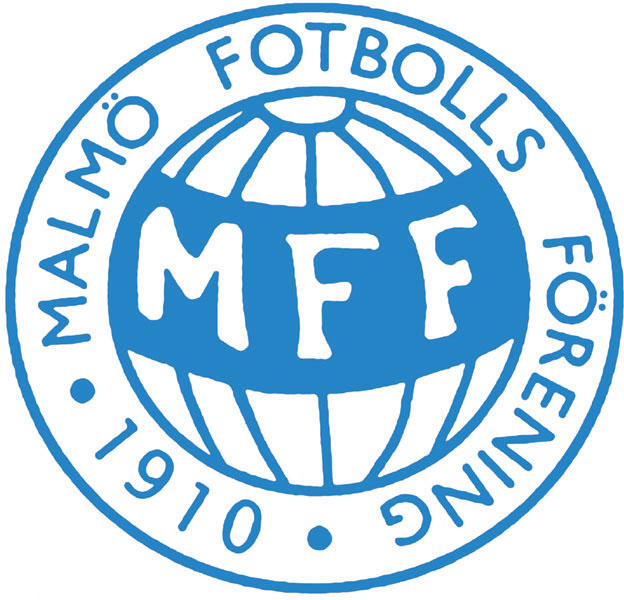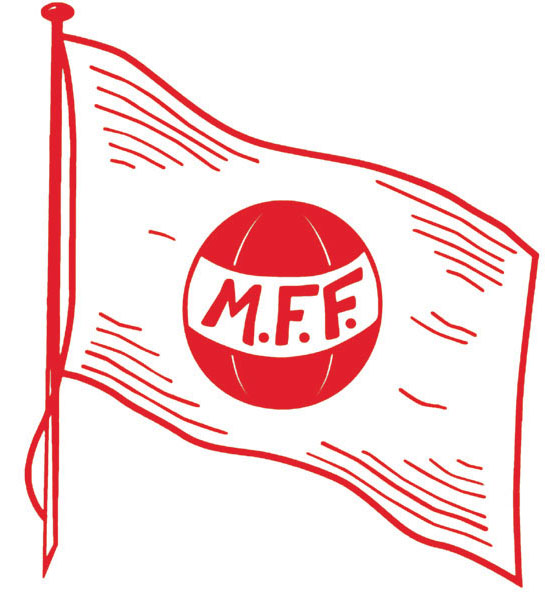
MALMÖ FF
FROM RED AND WHITE TO SKY BLUE
Malmö FF is Sweden’s most successful club. MFF were at their peak in 1979, when they played in the final of the European Cup against Nottingham Forest. Along the way they had beaten AS Monaco, Dynamo Kyiv, Wisła Kraków and Austria Wien. In Munich the Englishmen were too strong and they won 1-0, but Malmö FF had shown what Swedish football can achieve. To date Malmö FF remain the only club from a Scandinavian country to have reached the final of the European Cup/Champions League.
This success is attributed to the English manager Bob Houghton, who revolutionised Malmö FF and Swedish football with new tactics and training methods. In 1985 another English manager, Roy Hodgson, led the club to five consecutive league titles. This was also the club that spawned stars such as Patrik ‘Bjärred’ Andersson, Stefan Schwarz and Martin Dahlin. Not to mention the greatest name in Swedish football: Zlatan Ibrahimovic.
In the distant past, Malmö have played in red and white, but the team is known for their famous sky blue kit. The present club crest made its debut in the 1940s and consists of a shield adorned with white and sky blue stripes and five towers. The club’s full name was added when club chairman Eric Persson realised that people abroad were unable to identify the city form the club crest.
CLUB: Malmö FF
NICKNAMES: Di blåe (the Blues) and Himmelsblått (the Sky Blues)
FOUNDED: 1910
STADIUM: Swedbank Stadion, Malmö (24,000 capacity)
HISTORIC PLAYERS: Bo Larsson, Roy Andersson, Jan Möller, Patrik Andersson and Zlatan Ibrahimovic

1910–unknown date. Malmö FF was founded in 1910 by members of the sports club BK Idrott, whose jerseys were blue and white. The emblem showed a football with the club’s initials inscribed across it. The full name of the club, as well as the year they were founded, was written in the circle around the ball. It is unclear when this emblem was discarded.

At some point between 1910 and 1920 the emblem was changed. As with many other clubs at this time, a flag was chosen as the symbol. The ball from the previous crest was retained as well as the initials, even if now full stops had been introduced. The colours came from the team’s kit; MFF played in red and white during the greater part of the 1910s.

1920–1931. In 1920, MFF reverted to playing in blue and white and the emblem was given a makeover. The initials were still there, but this time they were placed within a shield. This crest would be used for a little over 10 years.

1931–1970. At the start of the 1930s, the emblem was changed. The shield was given a new form and the colour became sky blue, the colour of the team’s kit since 1920. A mural crown in silver also appeared at the top of the crest.

1970–present. The club’s legendary chairman Eric Persson, known as Hövdingen (the Chief), did not think the emblem was sufficiently recognisable abroad, so he added the name and the star below the shield. Zlatan Ibrahimovic began his career at Malmö, and when he joined PSG in the autumn of 2012, the emblem was projected onto Malmö’s landmark building Turning Torso. The year before, a second star had been added as a symbol of the club’s national league titles, something that provoked protest in some quarters as only 17 of these really counted. In Sweden, as in many other countries, one star resembles ten titles and therefore the upset.

Malmö’s Roland Andersson rides a challenge from Werder Bremen’s Rudi Völler in 1983. At this stage, Malmo’s club crest only carries one star.